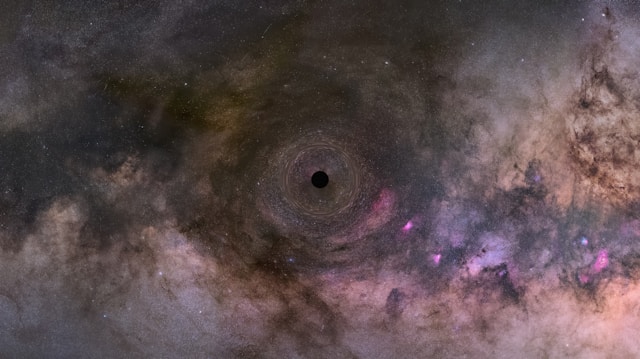Astronomers link tidal disruption events and quasi-periodic eruptions in a groundbreaking discovery
In a remarkable cosmic event, astronomers have captured a supermassive black hole tearing apart a star and using the energy released to destroy another nearby star. This extraordinary discovery, led by an international team of astrophysicists from Queen’s University Belfast, has solved two long-standing mysteries in the field of astrophysics.
The phenomenon involves what scientists refer to as “tidal disruption events” (TDEs), occurring when an object ventures too close to a black hole, resulting in its destruction and release of a brilliant burst of light. Alongside this, astronomers have been intrigued by “quasi-periodic eruptions” (QPEs)—bright X-ray flashes from the centres of galaxies, presumed to be connected to supermassive black holes, yet their exact relationship remained elusive.
Embed from Getty ImagesDheeraj Pasham from the Massachusetts Institute of Technology expressed excitement over the discovery, stating, “There had been feverish speculation that these phenomena were connected, and now we’ve discovered the proof that they are. It’s like getting a cosmic two-for-one in terms of solving mysteries.”
Utilising data from NASA’s Chandra X-ray Observatory, the Hubble Space Telescope, and the Neutron Star Interior Composition Explorer (NICER), the research team revealed that the remnants of the star destroyed by the black hole formed a disc-shaped “stellar graveyard.” Over time, this disc of stellar debris expanded significantly, eventually colliding with a nearby star that would have otherwise remained untouched.
Each time this nearby star passed through the debris disc, it generated spectacular bursts of gas and X-rays, providing the crucial evidence linking TDEs to QPEs. Andrew Mummery from Oxford University hailed this finding as a significant advancement, stating, “This is a big breakthrough in our understanding of the origin of these regular eruptions.”
This groundbreaking discovery not only sheds light on the complex behaviour of black holes but also deepens our understanding of the dynamic processes at play in the universe. The implications of these findings extend far beyond mere academic interest, potentially influencing our comprehension of galaxy evolution and the life cycles of stars.
As scientists continue to unravel the mysteries of the cosmos, this dual revelation stands as a testament to the power of collaboration across international institutions and the advancement of astronomical technology. The insights gained from this research highlight the intricacies of the universe, where the forces of destruction can also lead to spectacular displays of energy and light.
With the ongoing evolution of observational technologies, the universe continues to reveal its secrets, sparking excitement among astronomers and enthusiasts alike. This discovery, linking two previously separate phenomena, opens the door for further exploration and investigation into the enigmatic behaviour of supermassive black holes and their role in the cosmos.
As more data emerges and the astronomical community delves deeper into these findings, the understanding of the fundamental processes governing our universe will continue to evolve. The intersection of TDEs and QPEs marks just one chapter in an ever-expanding narrative, inviting further inquiry into the dark, captivating realm of black holes and their dramatic impact on the stars and galaxies that surround them.
